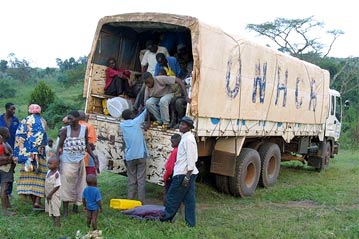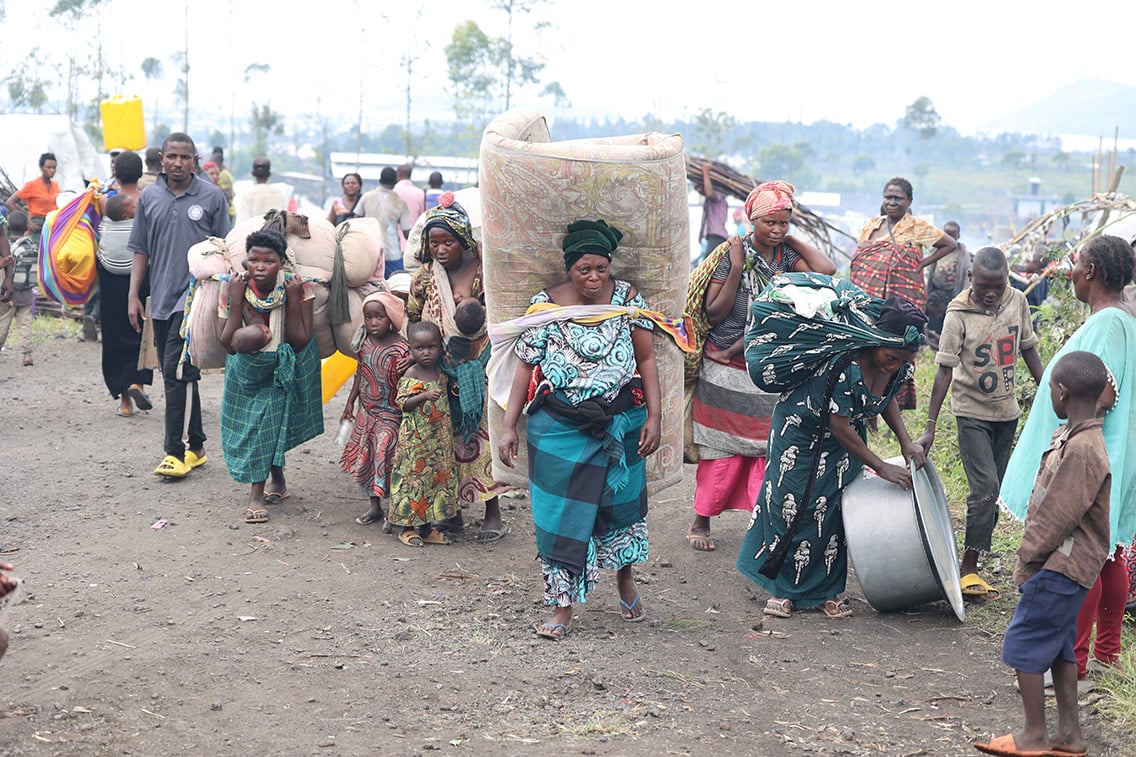UNHCR prepares to move new Congolese arrivals inland in Uganda
UNHCR prepares to move new Congolese arrivals inland in Uganda

KAMPALA, Jan. 24 (UNHCR) - The UN refugee agency is making preparations to move several thousand new Congolese refugees - who fled fighting in eastern Democratic Republic of the Congo (DRC) - into a refugee settlement at a safe distance from the border inland in Uganda.
UNHCR should soon be able to receive the new arrivals at Nakivale, an established refugee settlement in Isingoro district of Uganda, 218 kilometres south-west of Kampala.
"While space is available for newcomers, water supplies are limited," UNHCR's Acting Representative in Kampala, Montserrat Feixas Vihe said. "We also have to build more houses and expand health, sanitation and education services at Nakivale."
The situation along the border between Uganda and Democratic Republic of the Congo is changing rapidly, following fighting last week in the North Kivu region of eastern DRC.
Some 20,000 Congolese arrived in south-western Uganda by last weekend, but by Monday afternoon, about 7,000 of them had already gone back to the DRC.
"This is a region where people are used to crossing the border for temporary refuge, and we may still see greater numbers fleeing into Uganda, depending on the situation in the Kivus," Feixas Vihe added.
The remaining 8,000 refugees in Kisoro, 450 km (280 miles) south-west of Kampala, "have grown restive," she said, "after six or seven days living in the open, with no shelter, limited water and no food assistance."
On Tuesday, UNHCR set up a small clinic as well as 10 large temporary shelters that can accommodate 3,000 to 4,000 people.
"We are also building communal latrines and a police post. We are distributing blankets to the most vulnerable refugees," UNHCR spokesman Ron Redmond told journalists in Geneva. "The World Food Programme is supplying high-protein biscuits to everyone and will distribute more food tomorrow. We are working with other partners to supply medical aid and more drinking water."
However, UNHCR will better be able to take care of the Congolese once they move further inland to Nakivale, already home to about 16,000 refugees - 70 percent of them Rwandans. More than 5,000 people (5,278 individuals) now at Kisoro say they want to relocate to Nakivale because they do not trust the security in the Kivus.
There is another group, estimated at 5,000, in Uganda's Kanungu district, at the border hamlet of Ishasha. They want to stay near the border so they can easily go home if they feel it is safe to do so, and some have already gone back. Others are crossing back to their homes during the day to get food, but are spending the nights in Uganda. Only about 300 people from this group have asked to be relocated further inland so far, and UNHCR is discussing with the Ugandan government where to take them.
On Tuesday, the Ugandan district authorities were set to start immunizing the Congolese at Ishasha. The community is building communal latrines and UNHCR is working with the local authorities to decongest the area to minimize the risk of a cholera outbreak.
Uganda is already home some 208,000 refugees, including 168,800 Sudanese, 20,200 Congolese, and 15,600 Rwandans.








